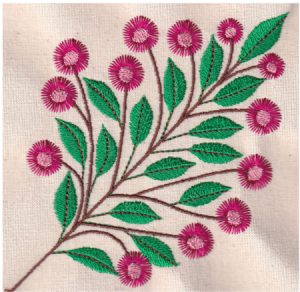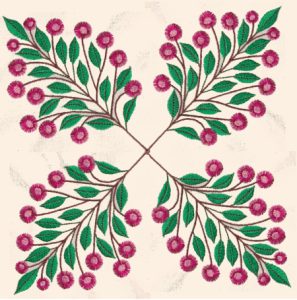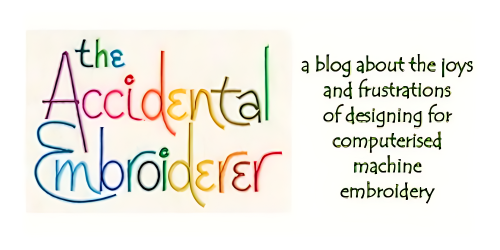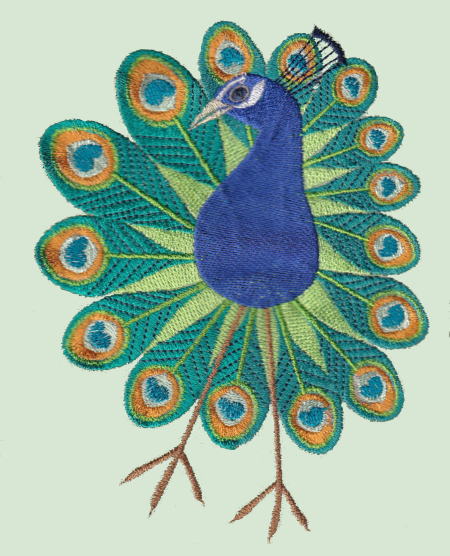A freebie from Secrets.
As you may know, I do a lot of designs for the Secrets of Embroidery website, and recently I’ve been organising a new collection for them. Without meaning to be rude, I have to say that many machine embroiderers who buy designs prefer to use the simpler and more conventional kind of designs, so the things I do for my “Secrets” collection aren’t always very exciting. My recent efforts are distinctly floral, and not very original, but I found these designs interesting to do. They are all oriented on the diagonal, as I thought that might be useful to people finishing off the corners of cushions and quilts.
However while I was playing around with them, I found that if you just made 4 copies of a diagonal design, and then rotated the orientation of three of them, you could make a very interesting construction out of them. That’s probably not very clear, so here’s an example:
Here is a floral design, designed on the diagonal

And here is the same design, moved into a more complicated construction

This design is free on the Secrets site, but I’m also putting it up here: just click on this link: Download Free diagonal v6 It’s just the single design – not the large 4-times one! It’s for the 4×4 inch (100 x 100 mm) hoop and is in .pes v.6

